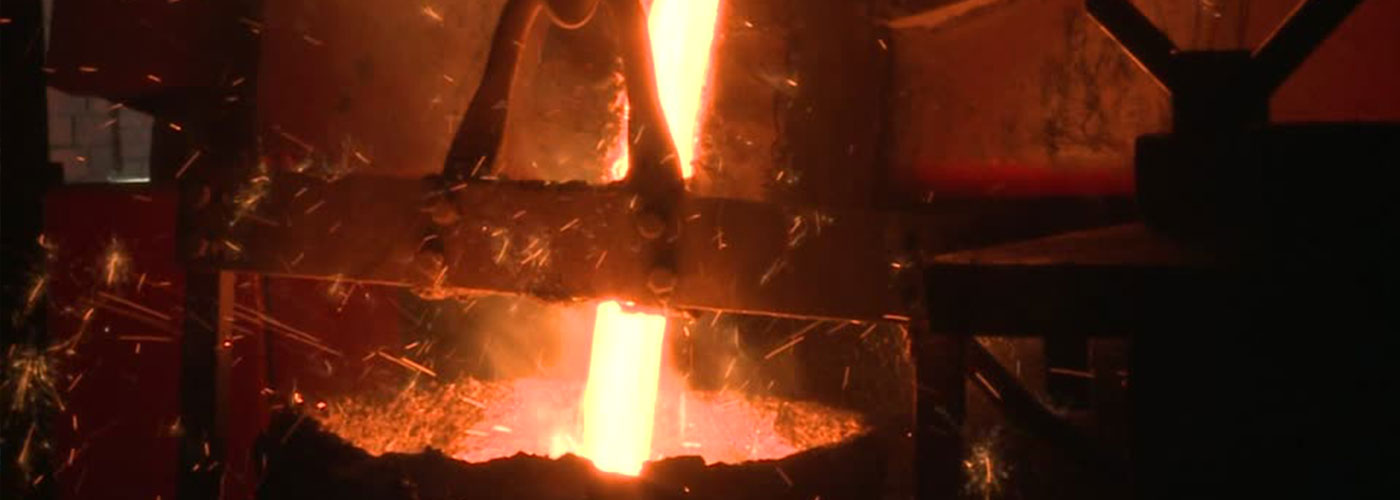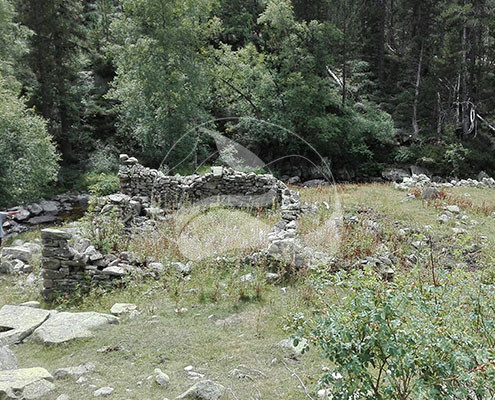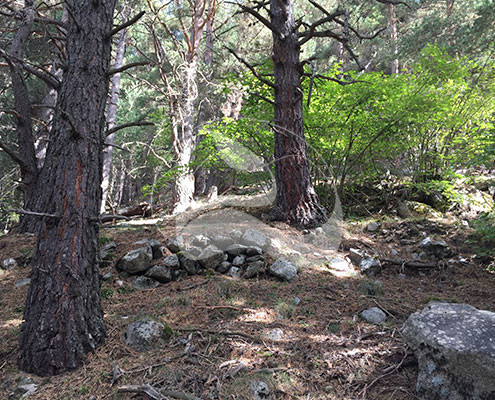
SIDERURGY
Together with agriculture and livestock, siderurgy has been one of the cornerstones of the Andorran economy in modern times. Between the 18th and 19th centuries it is estimated that there were 16 forges in Andorra, 8 of which operated simultaneously. One of them is the one known as the Farga d’Escaldes, which rose in the Madriu Valley at the place that is today called Solà de la Farga.
The accounting books of this forge have not been conserved, which is why it is difficult to know much about the exploitation of it.
According to the lease agreements that are conserved in the comú of Andorra la Vella, the forge was erected in 1732. The contracts specified, among other aspects, the forests from which coal was to be obtained, the Cession of the rights of mining, the conservation of the facilities and the material of the forge, and the cession of the Serrer Serrer land for the carriers’ animals to graze.
The dominion of the forge extended roughly from the Engolasters and Escaldes obac sector to the top of the Madriu, Perafita and Claror valleys. In order to implant the factory, the proximity to the natural resources spent was privileged to a place near a big flow river.
Initially, it was believed that the mining would be extracted from the Maiana, but this option was a failure and the dealers had to negotiate with the usufructuary of the Pimorent mines (France) a yearly right to import ore, against payment of 84 Barcelona pounds.

Remnants of the Farga d’Escaldes

The charcoal in the VMPC
The whole of the communal regulations clearly shows that the carbonization was not authorized in any way. Although it is an important logging activity that momentarily affected the forest, the communal regulations watched to avoid the eradication of the forests and to promote their regeneration. In addition, the tenants of the forge could only cut off trees to operate the forge and the resale of the coal was prohibited.
The difficult location of the forge of Escaldes prevent it from being one of the most important, but, for the same reason, it was one of the most singular ones. Its situation, away from the population centres and at a relatively high place, restricted the exploitation period practically to the summer months. The reduction of working time had to be offset by the savings that were supposed to represent being closer to the miners site, but it has already been explained, this did not happen and the mineral had to be imported from France.
The system of production of the forge of Escaldes was, as in the rest of industries of this type in Andorra, what it is known as the Catalan forge. The forge was basically composed of a furnace, in which the iron oxide was reduced with charcoal to obtain iron, and of one or two hammers that forged ingots. Iron oxides and coal were introduced into superimposed layers, and then combustion was fuelled with the injection of pressured air provided by the nozzle, a pipe through which water was lowered. The flow of water, in its fall, dragged the air that fed the furnace to melt the mineral. A mass of iron and slag was obtained, which was worked by the hammer, also driven by hydraulic force. The blows of the hammer drained the slags, and the iron was sliced till the ingots with the appropriate dimensions and weight to be exported were obtained.
The metal that was obtained in the forges of Andorra had acquired the reputation of being of very good quality, but had the disadvantage that the price was relatively high. A part of the production was consumed in the country, but most were exported to Catalonia.
The forges, as already noted, needed large amounts of charcoal to work. Charcoal was provided by charcoal bundles, which worked directly for the forge. Charcoal was prepared by burning pine wood in a low oxygen environment were allowed in the same forests of the valley. The charcoal kilns that have been found in the valley (more than 600, although not all of them produced charcoal for the forge, some was produced as a heating fuel) have very different forms. They can be circular, elliptical and quadrangular. Those that were in a sloping terrain used to have a bearing stonewall, in some cases it was rectilinear and in others in the form of a half moon. On the other hand, those located on flat ground did not have any associated structure, at most a circle of stones to delimit the combustion space. Charcoals kilns are often grouped in sets of two or three and nearby there are remains of provisional huts for the workers. These huts were small constructions of wood and branches on a stone base. Despite being ephemeral buildings, since the workers were constantly moving through the woods of the valley, they make up a set of unique vestiges of the use that man has done from the valley.
The disappearance of the Madriu or Escaldes forge (between 1832/36) coincided with the beginning of the decline of the iron and steel industry in Andorra. This was possibly the reason why no one was interested in re-raising it to continue its exploitation.

